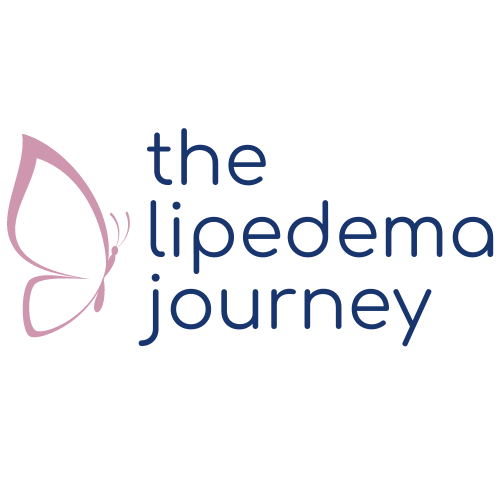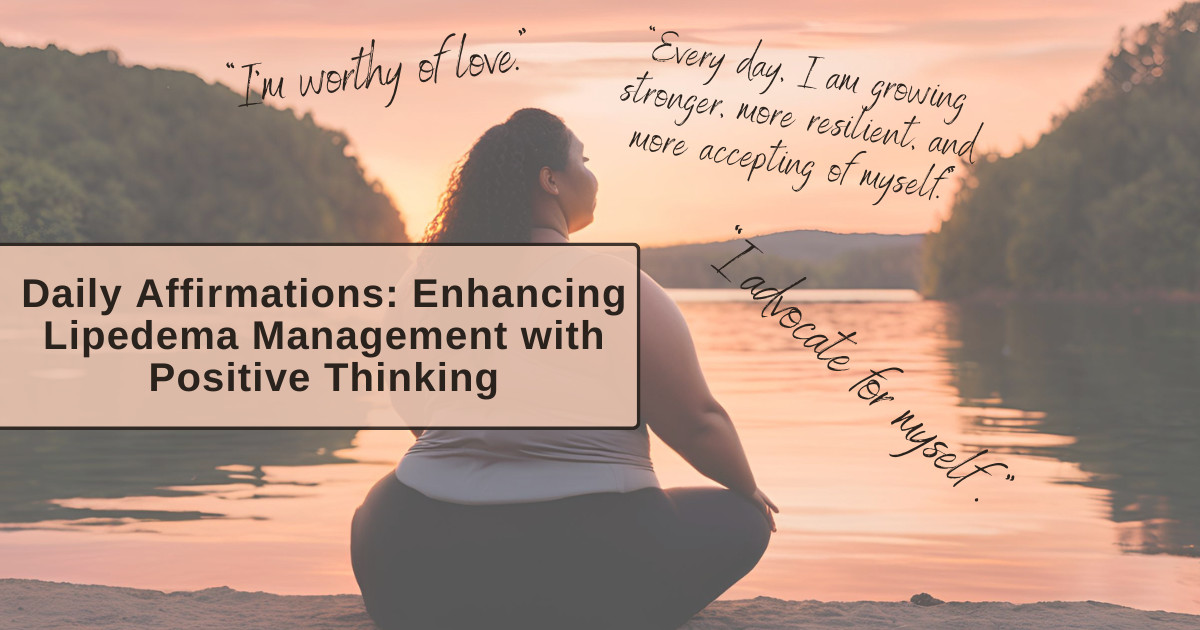Do you ever feel disconnected from your body, especially when dealing with something as physically and emotionally challenging as lipedema? It's easy to get tangled in a web of worries, frustrations, and medical terms. On this journey we often forget that our bodies are not the enemy; they're our lifelong companions. One way to build our relationship with our body is through mindfulness. But what exactly is mindfulness, and how can it help you establish a healthier relationship with your body?
What is Mindfulness?
Mindfulness is the practice of being fully present and engaged in the moment. It involves turning off the auto-pilot mode and consciously paying attention to your thoughts, feelings, and bodily sensations. Mindfulness isn’t about eliminating negative thoughts; rather, it’s about becoming aware of them without judgment. In doing so, we can cultivate a compassionate connection with ourselves.
The Benefits of Mindfulness for Women with Lipedema
- Self-Compassion: Mindfulness encourages a gentler, more loving conversation with yourself, helping in self-acceptance.
- Reduced Stress: Mindfulness techniques can decrease cortisol levels. Cortisol can lead to increased inflammation in the body, which can wreak havoc on those of us with lipedema.
- Enhanced Resilience: With consistent practice, mindfulness can make you more resilient to setbacks in your lipedema journey.
Mindfulness Techniques for a Healthier Body Relationship
Body Scan Meditation
How it Helps:
The body scan technique is about gradually turning your attention to different parts of your body, starting from your toes and moving upwards. This practice allows you to become aware of any sensations, tensions, or discomforts you may be feeling.
The body scan technique is about gradually turning your attention to different parts of your body, starting from your toes and moving upwards. This practice allows you to become aware of any sensations, tensions, or discomforts you may be feeling.
Why It's Extra Special for Women with Lipedema:
Being attuned to your body's unique sensations can help you navigate the complexities that come with lipedema. Recognizing tension or discomfort early on can guide your self-care practices more effectively.
Being attuned to your body's unique sensations can help you navigate the complexities that come with lipedema. Recognizing tension or discomfort early on can guide your self-care practices more effectively.
How to Do It:
- Find a Quiet Space: Choose a quiet and comfortable location where you can either sit or lie down.
- Start from the Bottom: Begin focusing on your toes, gradually moving up through your feet, legs, torso, arms, and finally, your head.
- Pause and Feel: As you mentally scan each part, pause for a moment to identify any sensations. Is there warmth, tingling, or perhaps tension?
- Breathe Through It: If you encounter tension or discomfort, try to breathe into that specific area, imagining the breath bringing relaxation.
- Reflect: After completing the scan, take a minute to reflect on how different parts of your body feel. This can be enlightening in understanding your body's unique needs.
My free Body Acceptance Meditation is a great form of body scanning. Give it a try!
Mindful Movement
How it Helps:
Incorporating mindful movement into your routine can be an enlightening way to deepen your connection with your body, which can be a transformative experience for women with lipedema. Movement—be it yoga, dance, or even simple stretches—can be a tangible expression of self-love. It's a way to celebrate what your body can do, rather than focusing on its limitations.
Incorporating mindful movement into your routine can be an enlightening way to deepen your connection with your body, which can be a transformative experience for women with lipedema. Movement—be it yoga, dance, or even simple stretches—can be a tangible expression of self-love. It's a way to celebrate what your body can do, rather than focusing on its limitations.
Why It's Extra Special for Women with Lipedema:
Living with lipedema often involves adjusting to physical changes and discomfort. Mindful movement allows you to work in harmony with your body, rather than fighting against it. It can be empowering to find movements that make you feel good, allowing for an emotional release and a new appreciation for your body's capabilities.
Living with lipedema often involves adjusting to physical changes and discomfort. Mindful movement allows you to work in harmony with your body, rather than fighting against it. It can be empowering to find movements that make you feel good, allowing for an emotional release and a new appreciation for your body's capabilities.
How to Do It:
- Choose Your Activity: It can be as simple as slow stretches in the morning or as structured as a yoga or dance class.
- Set an Intention: Before starting, set a positive intention for your practice. This can be a self-affirmation or a simple wish for your well-being.
- Feel the Movement: As you engage in the activity, focus on how your muscles feel during each movement. Is there tension? Is there a release? Try to breathe through each motion.
- Be Present: Let go of judgments or the need to perform the movements "perfectly." Your goal is not performance but awareness.
- Wrap-Up Reflection: After your session, spend a few minutes in reflection. How do you feel physically? Emotionally? What did you discover about your body and its relationship with movement?
Mindful movement can be a pivotal addition to your self-care toolkit, giving you a new lens through which to view and appreciate your body. For those of us on the lipedema journey, this practice can be a beacon of empowerment, helping us reclaim our bodies and rediscover the joy of movement.
Gratitude Journal
How it Helps:
Gratitude journaling involves noting down things that you're grateful for, which has been proven to enhance psychological well-being. It shifts your focus from what you lack or what's troubling you, towards appreciating what you have.
Gratitude journaling involves noting down things that you're grateful for, which has been proven to enhance psychological well-being. It shifts your focus from what you lack or what's troubling you, towards appreciating what you have.
Why It's Extra Special for Women with Lipedema:
Living with lipedema can often lead us to focus on our challenges and obstacles. Gratitude journaling encourages a shift in perspective, allowing you to appreciate the unique beauty and abilities of your body, even as you navigate lipedema.
Living with lipedema can often lead us to focus on our challenges and obstacles. Gratitude journaling encourages a shift in perspective, allowing you to appreciate the unique beauty and abilities of your body, even as you navigate lipedema.
How to Do It:
- Choose Your Medium: This could be a physical journal, a digital note, or even a dedicated app.
- Daily Entries: Aim to jot down 3-5 things that you're grateful for each day.
- Be Specific: Try to be specific about your entries. Instead of writing "I’m thankful for my health," you might say "I’m thankful my legs carried me through a walk in the park today."
- Reflect: At the close of the week, take a moment to revisit your entries, connecting your reflections to your body awareness.
For those of us navigating the lipedema journey, mindfulness could be the missing link to a healthier, more loving relationship with our bodies. By incorporating these simple yet mindfulness practices, you're not merely managing lipedema symptoms; you're creating a path to a life overflowing with self-acceptance, self-love, and resilience.
Do you practice mindfulness? Let me know in the comments!







0 Comments